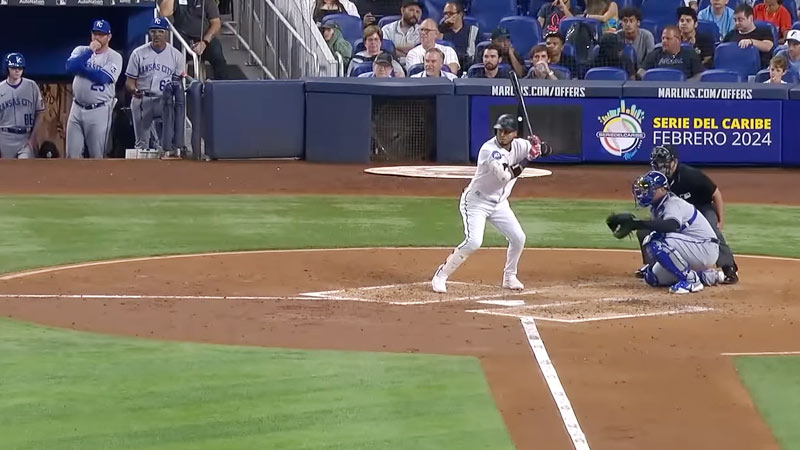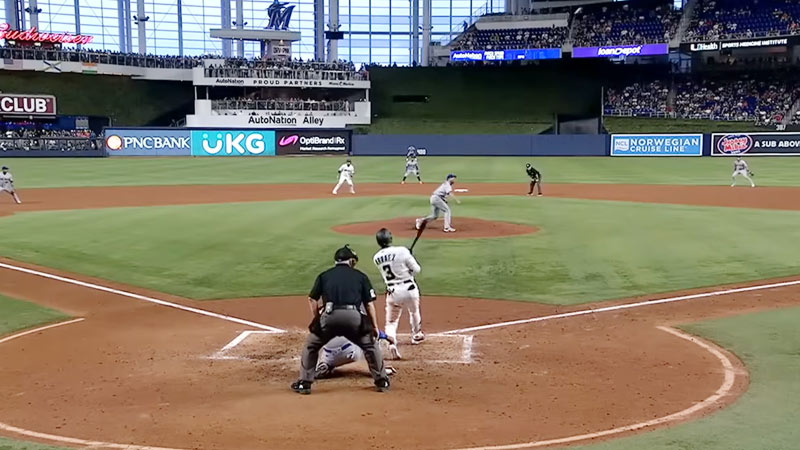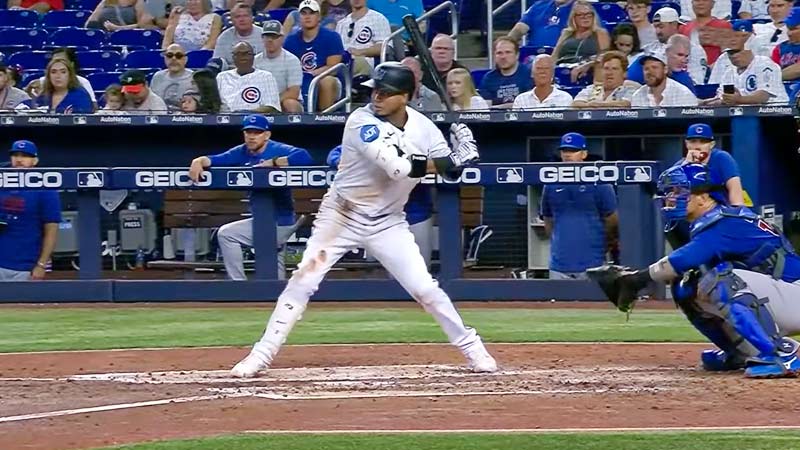In the history of baseball, achieving a batting average of .400 is considered a remarkable feat. However, the question that lingers in the minds of baseball enthusiasts is whether we will witness another player reach this impressive milestone.
In this article, we will explore the challenges and reasons behind the difficulty of hitting .400 in baseball, examine the list of players who have achieved this feat, and identify the last player to accomplish it.
We will also address some frequently asked questions regarding this topic. Keep your seat belts tight.
Can Anyone Hit 400 Again in Baseball?
The achievement of hitting .400 is incredibly rare in modern baseball. The last player to reach this historic milestone was Ted Williams of the Boston Red Sox, who accomplished the feat in 1941 with a remarkable batting average of .406.
Since then, numerous talented hitters have come close but ultimately fell short of the elusive .400 mark. The likelihood of witnessing another player achieve a .400 batting average in the current era of baseball is quite slim, given the evolution of the game and the challenges that hitters face today.
One of the main reasons hitting .400 is so difficult is the specialization of pitchers in the modern game. Teams now employ larger pitching staffs, often with specific roles and matchups in mind. Closers and setup men are utilized to exploit platoon advantages, making it harder for hitters to consistently face favorable matchups.
The increased emphasis on power pitching and the use of specialized relievers with unique repertoires have made it more challenging for hitters to sustain a high average throughout a season.
Defensive strategies and shifts have also played a significant role in making hitting .400 a rare feat. Teams employ advanced analytics to position fielders strategically based on a hitter’s tendencies and spray charts.
Defensive shifts effectively take away potential hits by aligning fielders in areas where a hitter is most likely to hit the ball.
While the challenges are significant, baseball is a game of surprises, and exceptional talents may emerge in the future who could challenge this historic milestone. However, it is important to recognize the immense difficulty of hitting .400 in the modern era.
Given the evolution of the game, specialized pitching, defensive shifts, the emphasis on power hitting, the length of the season, and the mental pressure involved, the likelihood of witnessing another player achieve a .400 batting average remains quite slim.
Why It Is So Difficult to Hit 400 in Baseball?
Several factors contribute to the difficulty of hitting .400 in baseball. Let’s dig into them in the next phase below.
Specialization of Pitchers

One of the main reasons hitting .400 has become increasingly challenging is the specialization of pitchers in the modern era. Teams now utilize larger pitching staff with specific roles. Closers, setup men, and lefty specialists are deployed to exploit matchups and limit the effectiveness of opposing hitters.
This means that batters are more likely to face fresh arms with specialized repertoires, making it harder to maintain a high average throughout a season.
Defensive Strategies and Shifts
Advancements in defensive strategies and analytics have had a significant impact on hitting .400. Teams employ defensive shifts, positioning fielders strategically based on a hitter’s tendencies and spray charts.
These shifts effectively take away potential hits by aligning defenders in areas where a hitter is most likely to hit the ball. By reducing the number of balls in play, these defensive alignments create challenges for hitters aiming for a .400 average.
Emphasis on Power Hitting
In recent years, there has been a shift in the approach to hitting in baseball, with an increased emphasis on power. Hitters are encouraged to drive the ball for extra-base hits and home runs rather than focusing solely on contact.
This shift in approach has led to an increase in strikeouts as hitters swing for the fences, sacrificing contact and consistency for power. While this approach can result in higher slugging percentages, it often comes at the expense of a higher batting average.
Increased Velocity and Movement of Pitches
Pitchers today throw harder and with more movement on their pitches compared to the past. With advancements in training methods and an increased understanding of biomechanics, pitchers can generate greater velocity and deceptive movement.
This makes it more challenging for hitters to make consistent contact and square up the ball, further reducing the likelihood of achieving a .400 batting average.
Length of the Season
The length of the baseball season also poses a challenge to hitting .400. A typical MLB season consists of 162 games, which means hitters have to maintain a high average over a large sample size of at-bats.
Sustaining a high level of performance throughout such a long and grueling season is incredibly difficult, especially considering factors such as fatigue, injuries, and fluctuations in form.
Mental Pressure and Expectations

The pursuit of a .400 batting average brings immense mental pressure and expectations on the hitter.
The constant attention from the media and fans can create added stress and distractions, affecting a player’s focus and performance. The mental aspect of the game becomes crucial when attempting to achieve such a rare and historic milestone.
Variability and Luck
Baseball is a game of variability and luck. Even the most skilled hitters can experience periods of bad luck, hitting balls directly at fielders or finding gaps less frequently.
A few unlucky at-bats can significantly impact a player’s average throughout a season, making it challenging to sustain a .400 average.
So, hitting .400 in baseball is an exceptional achievement that has become increasingly difficult in the modern era.
Factors such as specialized pitching, defensive shifts, the emphasis on power hitting, increased pitch velocity and movement, the length of the season, mental pressure, and variability all contribute to the challenges faced by hitters striving for a .400 batting average.
List of Players Who Hit 400 in Baseball
Throughout the history of baseball, several exceptional hitters have achieved the elusive .400 batting average. Let’s take a closer look at some of the notable players who accomplished this remarkable feat:
Nap Lajoie, Philadelphia Athletics (1901)
Nap Lajoie, also known as “Larry,” had an outstanding season in 1901, achieving a batting average of .426.
He was a versatile infielder and a dominant hitter during the Deadball Era. Lajoie’s exceptional hand-eye coordination and ability to consistently make solid contact with the baseball contributed to his extraordinary batting average.
Ty Cobb, Detroit Tigers (1911, 1912, 1922)
Ty Cobb, widely regarded as one of the greatest hitters in baseball history, reached the .400 mark three times in his career. In 1911, he finished the season with a batting average of .419, followed by .409 in 1912 and .401 in 1922.
Cobb’s aggressive style of play, combined with his exceptional speed and hitting prowess, made him a formidable force at the plate.
Shoeless Joe Jackson, Cleveland Indians (1911)
Shoeless Joe Jackson had a stellar season in 1911, achieving a remarkable batting average of .408. Jackson was known for his smooth swing and natural hitting ability.
Although his career was cut short due to his involvement in the infamous Black Sox scandal, Jackson’s performance in 1911 remains one of the most memorable in baseball history.
George Sisler, St. Louis Browns (1920, 1922)
George Sisler, a first baseman, had an exceptional career and reached the .400 mark twice. In 1920, he finished the season with a remarkable .407 batting average, and in 1922, he achieved a batting average of .420.
Sisler was known for his exceptional speed, solid contact hitting, and ability to spray the ball to all fields.
Harry Heilmann, Detroit Tigers (1923)
Harry Heilmann, an outfielder for the Detroit Tigers, had an outstanding season in 1923, achieving a batting average of .403. Heilmann was known for his excellent hand-eye coordination and ability to consistently drive the ball.
His remarkable hitting skills contributed to the Tigers’ success during the 1920s.
Ted Williams, Boston Red Sox (1941)
Ted Williams is the last player to achieve a .400 batting average in a single season. In 1941, he finished the year with a remarkable batting average of .406.
Williams was known for his exceptional eyesight, disciplined approach at the plate, and pure swing. His achievement in 1941 solidified his place among the greatest hitters in baseball history.
The list of players who achieved a .400 batting average extends to include other legendary names such as Rogers Hornsby, who achieved the feat multiple times.
Each player’s achievement highlights their exceptional skill, consistency, and ability to make solid contact with the baseball.
Who Is the Last Player to Hit 400 in Baseball?
As mentioned earlier, Ted Williams was the last player to achieve a .400 batting average in a single season. In 1941, Williams finished the year with a remarkable batting average of .406, etching his name in baseball history.
Ted Williams, often referred to as “Teddy Ballgame,” had an illustrious career in baseball. Born on August 30, 1918, in San Diego, California, Williams showed exceptional talent from a young age.
He made his Major League Baseball debut with the Boston Red Sox in 1939 and quickly established himself as one of the game’s premier hitters.
Throughout his career, Williams showcased exceptional plate discipline, a keen eye for pitches, and remarkable hand-eye coordination. Known for his pure swing and powerful hitting, he was a feared presence at the plate.
Williams had a remarkable ability to make solid contact with the ball, resulting in a high number of hits and a consistently high batting average.
In addition to his historic achievement of hitting .406 in 1941, Williams had a remarkable career that spanned 19 seasons, interrupted by his service in the military during World War II and the Korean War.
Despite missing significant playing time due to military service, Williams amassed impressive statistics and achieved numerous accolades.
He was a two-time American League Most Valuable Player (MVP), winning the award in 1946 and 1949. Williams was selected to the All-Star Game 19 times and won six American League batting titles throughout his career. He also led the league in home runs four times and runs batted in (RBIs) four times.
Williams retired from baseball in 1960 with a career batting average of .344, 521 home runs, and 2,654 hits. His remarkable accomplishments and exceptional hitting prowess earned him a well-deserved spot in the National Baseball Hall of Fame.
FAQs
What is the highest batting average in a season?
The highest batting average achieved in a season is .440 by Hugh Duffy in 1894. Duffy’s exceptional performance during that season earned him a place in baseball history as one of the most prolific hitters.
How many times did Ted Williams hit over .400?
Ted Williams hit over .400 in a single season once, finishing with a remarkable .406 batting average in 1941. This accomplishment solidified Williams’ status as one of the greatest hitters in the history of the game.
Who came closest to hitting .400 after Ted Williams?
Tony Gwynn of the San Diego Padres came closest to hitting .400 in recent history. In the strike-shortened season of 1994,
Gwynn finished with a batting average of .394. His exceptional hitting skills and ability to consistently make contact with baseball made him a formidable hitter.
How many hits do you need to bat .400 in a season?
The number of hits required to bat .400 in a season varies depending on the total number of at-bats. However, a rough estimate is around 200 hits in a 500-at-bat season.
Achieving such a high batting average requires a combination of skill, consistency, and a disciplined approach at the plate.
Will anyone ever hit .400 again?
While it is challenging to predict the future, hitting .400 in modern baseball seems unlikely due to various factors.
Specialized pitching, advanced defensive strategies, and the emphasis on power-hitting have made it increasingly difficult for hitters to maintain such a high average over a full season.
However, baseball is a game of surprises, and exceptional talents may emerge in the future who could challenge this historic milestone.
Bottom Line
Hitting .400 in baseball is a remarkable achievement that has been accomplished by only a select few players in the history of the game.
The combination of factors such as specialized pitching, advanced defensive strategies, and the modern focus on power-hitting makes achieving this milestone even more difficult.
While baseball fans will continue to hope for another player to reach this legendary mark, the challenges and circumstances of the game make it highly improbable.
Nonetheless, the rich history and legacy of the players who have achieved a .400 average continue to captivate fans and serve as a testament to their exceptional skill and prowess at the plate. Best of luck.







